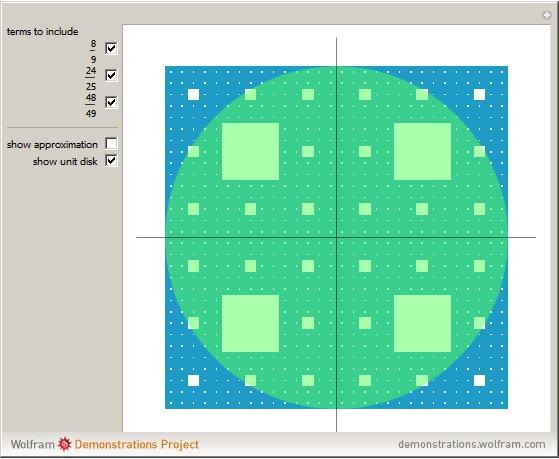The Wallis Sieve is a variant on the Si
The Wallis Sieve is a variant on the Sierpiński Carpet. It has the remarkable property that the remaining area (in blue) is equal to the unit circle, shown in green.
Blog post about it by +Ed Pegg:
http://community.wolfram.com/groups/-/m/t/822984
We're hosting a workshop to learn about the work of John Wallis. If you're in Cambridge, UK on Sunday 27th November then come along:
http://www.cambridgelovelace.org/
Blog post about it by +Ed Pegg:
http://community.wolfram.com/groups/-/m/t/822984
We're hosting a workshop to learn about the work of John Wallis. If you're in Cambridge, UK on Sunday 27th November then come along:
http://www.cambridgelovelace.org/

The Wallis Sieve is a variant on the Sierpiński Carpet. It has the remarkable property that the remaining area (in blue) is equal to the unit circle, shown in green. Blog post about it by +Ed Pegg: http://community.wolfram.com/groups/-/m/t/822984 We're hosting a workshop to learn about the work of John Wallis. If you're in Cambridge, UK on Sunday 27th November then come along: http://www.cambridgelovelace.org/
Shared with: Public, Ed Pegg, Evelyn Lamb
This post was originally on Google+

https://en.wikipedia.org/wiki/Ford_circle